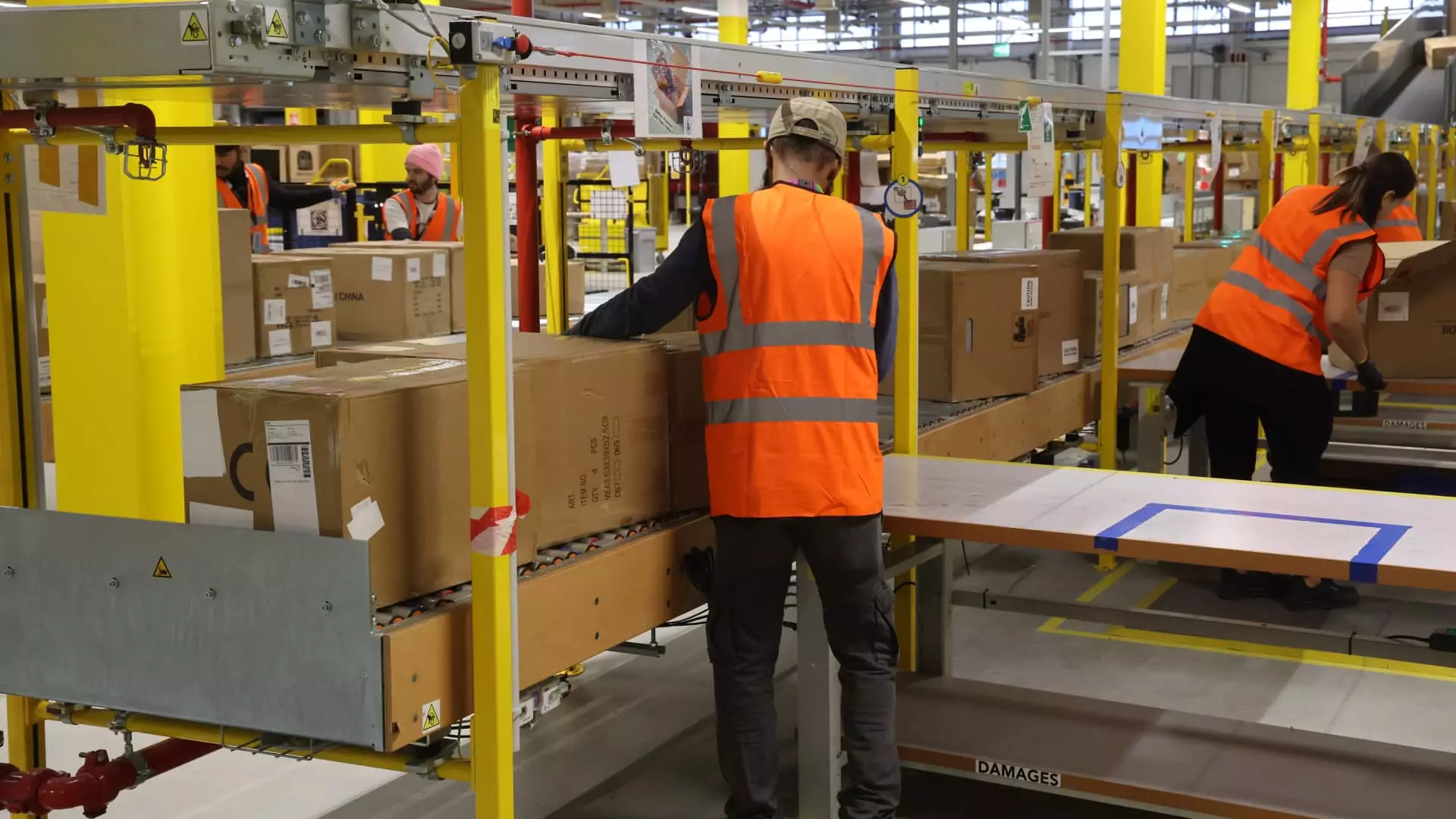In an extraordinary show of technological ambition, Amazon recently announced reaching a monumental milestone—its one millionth robot in operation across its global logistics network. These aren’t mere mechanical aids; they symbolize a seismic shift in how mega-corporations orchestrate their supply chains. Amazon’s deployment of such a vast robotic fleet underscores a relentless pursuit of efficiency, scalability, and cost reduction. By integrating these robots, especially within its sprawling warehouses, Amazon claims to have enhanced productivity and streamlined operations, promising faster deliveries and optimized inventory management.
Yet, beneath this technological triumph lies a complex narrative. These robots, powered increasingly by advanced AI models like “DeepFleet,” do not operate in isolation. They coordinate movements, optimize routes, and reduce transit times—features that seem impressive on paper but cast a long shadow over job security. With automation at such an unprecedented scale, the central question emerges: Is this progress a harbinger of a highly efficient future, or a warning sign of mass displacement for human workers?
The Double-Edged Sword of Innovation
While proponents praise automation as a catalyst for economic growth and operational excellence, critics argue it’s a Pandora’s box of socio-economic upheaval. Amazon’s claim that robots are freeing up employees to develop specialized technical skills is somewhat optimistic—these roles are often more scarce and require higher education than the jobs they replace. The narrative of “collaboration” between humans and robots becomes blurred when automation leads to fewer jobs and wage stagnation.
Furthermore, recent statements from Amazon’s leadership suggest a troubling acknowledgment of workforce reductions driven by AI advancements. CEO Andy Jassy’s remarks about AI automating certain tasks and potentially reducing headcount evoke a dystopian undertone, especially when paired with the company’s ongoing layoffs—over 27,000 jobs eliminated in recent years. This pattern isn’t isolated; other tech giants and startups alike are following suit, deploying AI as the primary justification for downsizing.
The broader societal concern is palpable. Surveys and studies highlight a consensus that factory workers and lower-skilled laborers stand on the frontlines of this technological revolution, most vulnerable to unemployment as AI continues to evolve. The promise of new high-tech roles in AI, robotics, and engineering doesn’t suffice to compensate fully for the jobs lost in traditional roles, creating a sense of economic dislocation and social instability.
The Future of Work: Optimism or Alarm?
It’s tempting to view these developments through a lens of optimism—emphasizing gains in productivity, reduced costs, and innovative opportunities for some workers. Yet, dismissing the human cost risks ignoring the systemic inequalities and societal upheaval that automation can induce. Amazon’s claims of fostering opportunities for front-line employees contrast sharply with the reality of layoffs and the shrinking middle-tier workforce.
The narrative around AI and automation is often overly optimistic about technological progress replacing human labor with highly skilled roles. However, the reality is that unskilled and semi-skilled workers will bear the brunt of these changes, often without adequate safety nets. Even as organizations celebrate efficiency milestones, they tend to sideline the long-term consequences for ordinary workers whose livelihoods are threatened.
It’s crucial to recognize that while AI can amplify human capabilities, it should not be wielded merely as a tool for profit maximization at the expense of employment stability. There’s an urgent need for policymakers, companies, and society to grapple with the implications—establishing strategies that balance technological innovation with worker protections and economic dignity.
The Ethical Dilemma of Technological Progress
What becomes of a society that increasingly relies on mechanical substitutes for human labor? This question lies at the heart of the debate surrounding AI-driven automation. Technological progress should serve humanity, not undermine it. Yet, the current trend suggests a prioritization of corporate profitability over societal well-being.
Amazon’s aggressive deployment of robots, as part of a broader pattern across tech companies, reflects a worldview that celebrates efficiency often without sufficient consideration of the human dimension. The drive for faster, cheaper deliveries and higher output, powered by AI, risks creating a future where human workers become optional rather than essential.
In this context, ethical considerations must be at the forefront. How do we ensure that technological advancements uplift rather than impoverish communities? Can we craft policies that encourage the integration of AI in ways that create new job categories and educational opportunities, rather than merely replacing existing roles? Until these questions are addressed with diligence and foresight, the promise of AI remains shadowed by the potential for social fracture and economic disenfranchisement.
The ongoing saga of Amazon’s robotic revolution exemplifies both the incredible potential and profound peril of artificial intelligence. It challenges us to rethink not just how we work, but what kind of future we want to build—a future where humans and machines coexist in harmony rather than competition.

